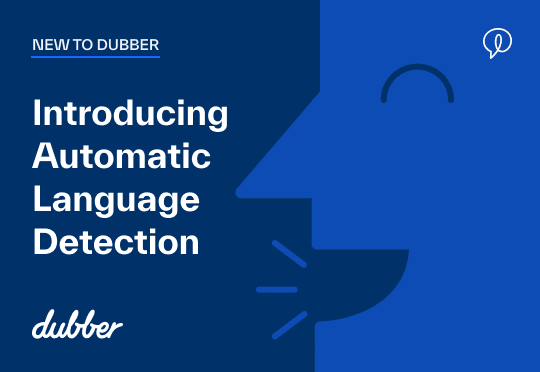
Data is what runs an enterprise. If you don’t believe it, just take a look at your business financials. But we’ve come a long way from just analysing revenue and spend. There’s now the opportunity – and business imperative – to look at all business data. And what greater goldmine of information than the conversations within your business, with your partners, with your customers, and with the public?
“Data Masters enjoy 22% higher profitability, 70% higher revenue per employee, and 245% higher fixed asset turnover over their peers”
– Data Mastery, Capgemini.
Turning conversations into meaningful business data is the first hurdle. Leveraging that data is the next. Here are the common challenges faced by enterprises in harnessing the power of conversational data sets.
Challenge: Legacy technologies have fragmented datasets
“80% of data producers and consumers regularly have data quality issues.”
– The State of Data Quality in 2021, Datafold.
Data is locked in legacy systems and often incomplete
Organisations have been using legacy, on-site and even manual technologies to record, store, transcribe and annotate voice conversations. With these solutions, archives may be limited and the data itself limited (e.g. only sound files stored, manual and incomplete data tags).
Data is usually fragmented across multiple channels/systems
Legacy systems generally only capture one channel at a time, which is no longer useful when considering that we now operate across call centres, Zoom, mobile, and more. There may be a number of different systems across different channels, each with its own data, views, and storage formats. This siloed effect means conversational data is fragmented.
Solution: Unified Conversational Recording technology
Bringing together conversational data in a centralised location across all the different channels is imperative – where it can live as one standard dataset. While some channels may lack particular data points (e.g. voice calls won’t have a video recording), the data across channels and services will be standardised. This data needs to be instantly portable so that it can be used in other business applications.
Challenge: Lots of data is required for AI to be accurate (maybe more than you have)
“There is a difficulty of obtaining data sets that are sufficiently large and comprehensive to be used for training.”
– Driving impact at scale from automation and AI, McKinsey
Industry-specific (e.g. Financial Services regulation) or domain-specific (e.g. Sales) context and dialects
Industry, domain and company-specific context and dialects aren’t always understood immediately by AI – it needs the right metadata, direction and training. For example, in Australia’s new internal dispute resolution regulatory guide for financial services businesses – ‘RG 271’ – the directive is that these businesses need to acknowledge complaints and respond within given timeframes. But what does a complaint necessarily look like in a conversation? Is it the word ‘complaint’, an angry tone of voice, or a specific utterance? Are there cultural conversational identifiers that indicate a complaint?
Solution: Capture everything, using NLP to learn your business language
Using NLP to do a deep dive into your conversational data is the only way to be able to address these type of specific business needs. Being able to acutely examine tone, sentiment, and regional differences is the key to actually understanding your employees and customer base. Without conversational metadata and NLP in circumstances like this, you’ll be left in the dark. Once you have all the right data, AI can do its job properly.
Challenge: Leveraging the cloud to reduce time to value
“The hybrid cloud platform can deliver value to the business by enabling digital transformation, giving it the best from the public cloud and on-premises infrastructure services, and transcending the corporate boundary.”
– The Business Benefits of a Hybrid Cloud Platform, DXC.technology
Some large organisations are still in the early stages of their cloud strategy implementation, and may still be working out or piloting solutions to find the best-fit and economics for their hybrid model. This complexity and legacy infrastructure limits the pace at which the organisation can change.
Solution: Look to cloud-native solutions that can integrate with legacy infrastructure
No matter where you are in your cloud maturity across the enterprise, what you can do is ensure new enterprise solutions like Conversational Intelligence are themselves cloud-native by design with the ability to integrate with your existing legacy solutions. While other cloud migration activities may take time, you can benefit from new cloud-native solutions immediately.
Challenge: Innovating with the data
“Accompanying any technological shift is a change in tools, processes, and equally as important, people and behaviour. Even with the most cutting-edge technology and well-documented processes, users need to feel empowered to adopt modern BI solutions, as they are the ones who will drive insight-driven decision making.”
– Modern Business Intelligence, Deloitte.
Many enterprises are still focused on creating data assets – which is great, but doesn’t create value in and of itself
Yes, getting quality, complete, clean datasets is a significant priority. But alone, this data is only useful to data workers – who need directives and business questions from leadership, departments, and individuals to make sense of the data.
Solution: Develop strategic plans for what to do with the data
Make a start building the business capabilities to leverage data
Leveraging business data is where leaders in business are streaking ahead. This equates to data workers, data-ingesting applications and strategic plans and roadmaps for analysis, reporting, and automation of business data. Learning how to use data effectively is the first step.
Ultimately, organisations want to empower every employee to be able to use data insights to drive efficiencies and answer relevant complex business questions in their work.
Equally important is changing culture and ways of working
Data and insights are historically hidden in organisations, only accessed by managers or disclosed quarterly. Data capture activities have been mysterious. By opening up the visibility of capture and useful real-time insights to a wider audience, we’re able to change the culture within the organisation to feel empowered by, and trust, business data.
This trust component also underpins technology program rollouts. Workflows and automations built on business data need to be used to have effect. When leadership falters on directives and messaging, employees default to known processes. While hesitancy in revolutionary technology is natural, the business benefits you’ll gain can’t be disrupted by a 2010 mindset.
Are enterprises today ready to harness the power of conversational data sets?
Technology-forward businesses have made great strides in leveraging conversational data sets, but for the rest, there is still foundational work to be done. Picking the right technologies, using the right data, and – most importantly – knowing how to put that data to work is the path to success.



